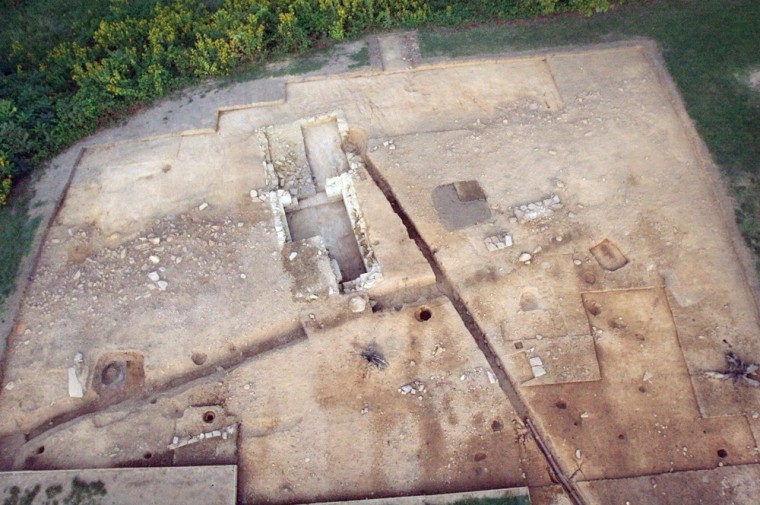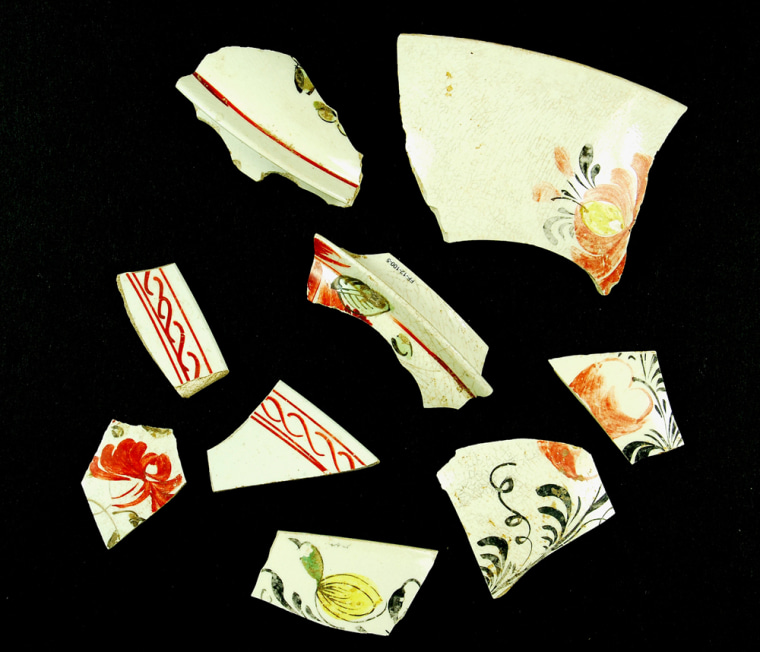Archaeologists were delighted to at last find the remains of George Washington's boyhood home, but got stumped when they looked for evidence of the cherry tree and rusty hatchet.
"This was the setting for many important events in Washington's life," David Muraca, director of archaeology for The George Washington Foundation, announced Wednesday.
Most biographies offer little detail of the first president's youth, so the discovery may provide insight into Washington's childhood, he said. The site is located at Ferry Farm, just across the Rappahannock River from Fredericksburg, Va., about 50 miles (80 kilometers) south of Washington.
Understanding Washington's boyhood
Philip Levy, associate professor of history at the University of South Florida, found evidence that the house was a one-and-a-half-story residence perched on a bluff overlooking the river.
"If George Washington did indeed chop down a cherry tree, as generations of Americans have believed, this is where it happened," said Levy. The researchers said the artifacts they have recovered did not include a hatchet.
"There is little actual documentary evidence of Washington's formative years. What we see at this site is the best available window into the setting that nurtured the father of our country," Levy said.
Three likely locations were excavated over seven years. The site where the foundations of Washington's home were discovered was built during the first part of the 18th century — Washington was born in 1732 — fit the type of house in which Washington would have lived and also yielded artifacts likely linked to his family.

"Now that we have identified the home, we can begin understanding Washington's childhood," Muraca said, as well as dispel some of the folklore surrounding the president's life. For instance, the tale of Washington's chopping down the cherry tree with a hatchet and confessing to his father has never actually been proven.
"We see a county-level gentry home," he said. Washington's father "was wealthy within the county ... not on the colonial level but locally important, and we see a home befitting that status." The house measured about 53 feet by 37 feet (16 by 11 meters), with a central hallway and two rooms on each side of the hallway.
The eventual goal, Muraca said, is to rebuild the home as it was in the 1740s.
Levy and Muraca spoke at a teleconference organized by the National Geographic Society, which helped fund the work. Research at the location has continued for seven seasons.
Artifacts found in cellars
The 113-acre Ferry Farm — itself a National Historic Landmark — was known as the former home of the Washington family, but previous attempts to locate the house itself had been unsuccessful.
Most of the wood from the home was reused by builders on other structures or was damaged in the Civil War, and part of the foundation eroded away, the researchers said.

But after digging through layers of dirt the archaeologists found two chimney bases and stone-lined cellars and root cellars.
The cellars held a large number of artifacts including pieces of the house's ceilings and painted walls, fragments of 18th century pottery and other ceramics, glass shards, wig curlers and toothbrush handles made of bone.
Muraca said they also recovered larger objects such as pieces of a tea set that probably belonged to George's mother, Mary Ball Washington; wine bottles; knives; forks; and 10 pieces of a group of small figurines that might have stood on a mantle.
They also discovered a well-used pipe bowl, blackened from smoking, that was marked with a Masonic crest. Washington joined the Fredericksburg Lodge of the Masons in 1753.
"While we can't say that this was George Washington's pipe, we can wonder about it," Levy said.
And there were burned remains of a fire at the farm on Christmas Eve, 1740, which Washington mentioned in letters. During the Civil War the farm served as a staging site for Union soldiers attacking Fredericksburg.
Washington, who was known to swim in the Rappahannock and to take the ferry to Fredericksburg, grew to adulthood at the farm. But he spent less time there as he got older.
Eventually he moved to his half-brother's estate at Little Hunting Creek, south of Alexandria, Va., later renamed Mount Vernon.
In addition to National Geographic, the research is funded by the Commonwealth of Virginia, The Dominion Foundation, the Mary Morton Parsons Foundation and many individuals.